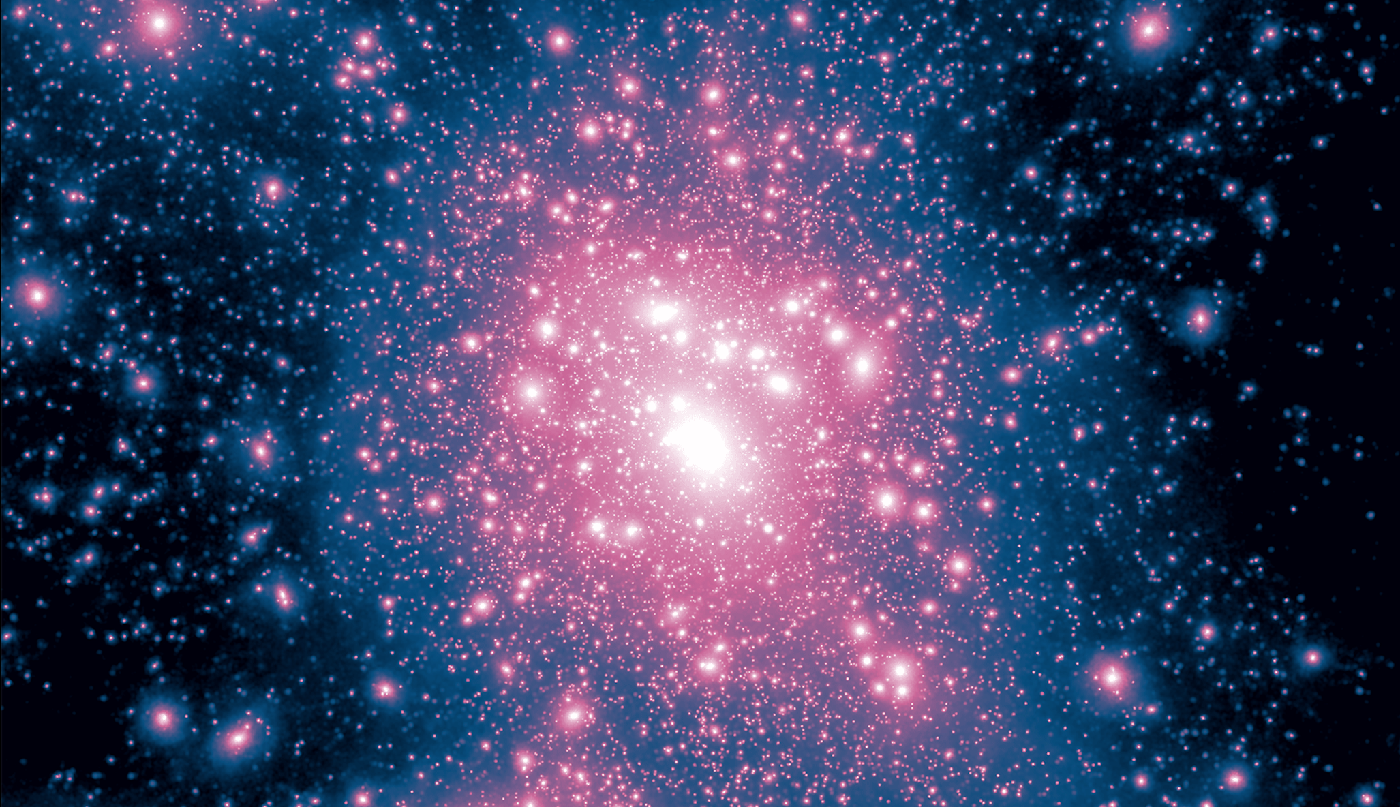Dark Matter halos
Structure in the Universe forms hierarchically, according to the LCDM paradigm. The dominant non-uniform component of the mass-energy content of the Universe is thought to be dark matter, composed of yet-undiscovered fundamental particles.
